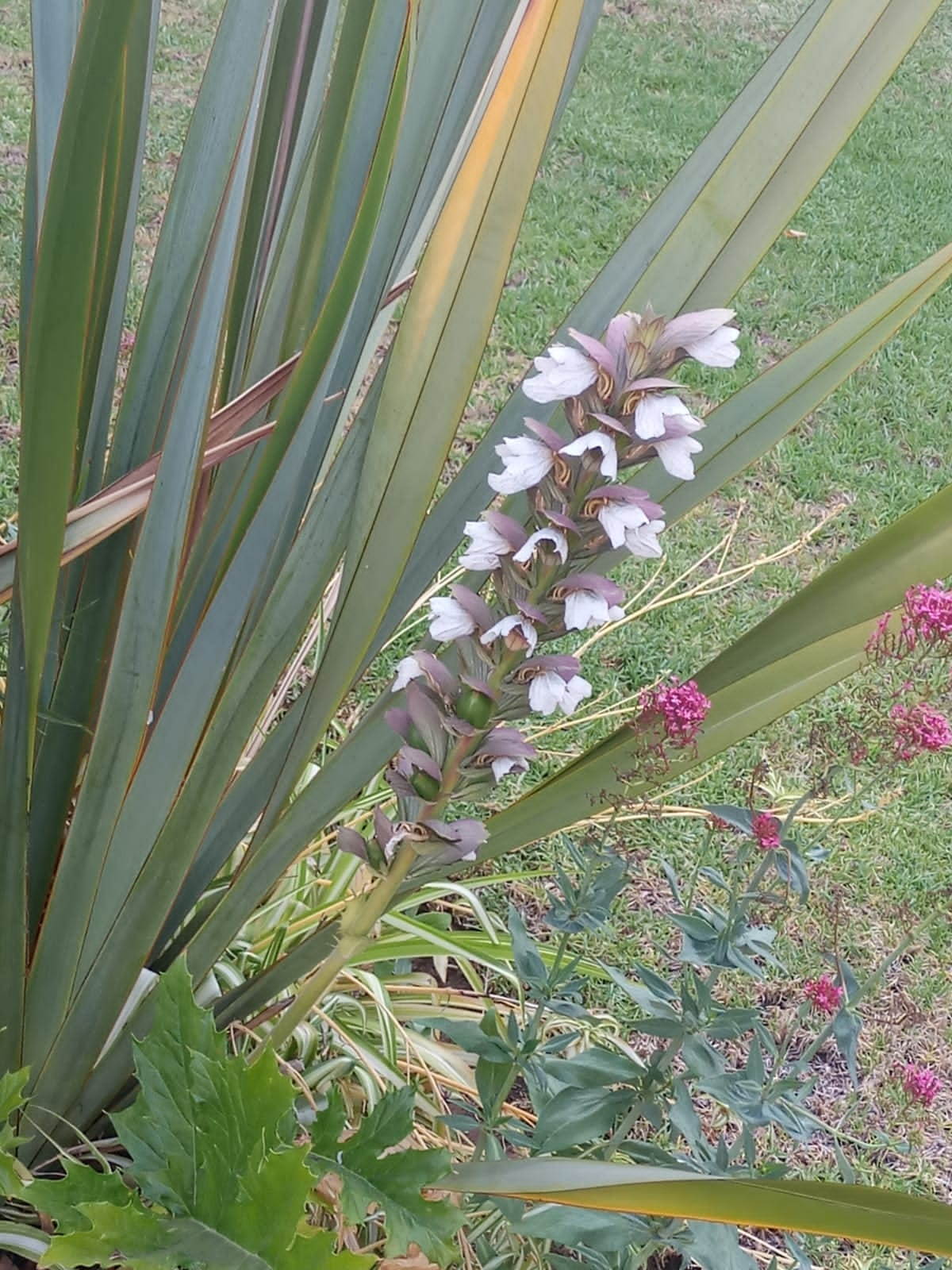Hay un libro abierto siempre para todos los ojos: la naturaleza.
There is a book that is always open to all eyes: nature.
John Muir psicologiaymente.com
¡Hola amigos de #Hivegarden! Es gusto saludarles y poder publicar mi primer post en su comunidad. Para ello quise traerles las imágenes de una planta que he encontrado en un cuidado jardín de una casa cerca de la mía, mientras realizaba un pequeño paseo.
Me llamó mucho la atención por los hermosos colores de sus flores y las grandes, verdes y atractivas hojas. Así que procedí a capturar su hermosa imagen y, posteriormente, indagar sobre esta planta que no conocía.
Hello friends of #Hivegarden! It's nice to greet you and to be able to publish my first post in your community. For this I wanted to bring you the images of a plant I found in a well-kept garden of a house near mine, while taking a short walk.
It really caught my attention because of the beautiful colors of its flowers and the large, green, attractive leaves. So, I proceeded to capture its beautiful image and subsequently inquire about this plant that I did not know about.

Se trata de una planta conocida por diversos nombres comunes: Acanto, Alas de ángel, Carnerona, Calzones de oso, Oreja grande, Hierba calderona, Hierba gigante, Vela de la mañana o Yerba carderona. Es oriunda de Asia y África pero se ha naturalizado ampliamente en diversos países del Mediterráneo al ser cultivada en jardines con fines ornamentales.
Su nombre científico es Acanthus mollis. El nombre del género, Acanthus, proviene de la palabra friega akantha que significa espina, habiendo referencia a las brácteas espinosas de la inflorescencia. El epíteto específico, mollis, se refiere a las hojas que son blandas y flexibles.
It is a plant known by several common names: Acanthus, Angel's wings, Carnerone, Bear's breeches, Big ear, Carderian grass, Giant grass, Morning candle or Carderian weed. It is native to Asia and Africa but has become widely naturalized in several Mediterranean countries as it is cultivated in gardens for ornamental purposes.
Its scientific name is Acanthus mollis. The name of the genus, Acanthus, comes from the Greek word akantha meaning spine, referring to the spiny bracts of the inflorescence. The specific epithet, mollis, refers to the leaves which are soft and flexible.


Sus flores de pétalos blancos que se presentan debajo de brácteas espinosas con capucha de color púrpura, se elevan sobre el follaje en espigas verticales. La hojas de Acanto tienen un aspecto clásico y, se cree que, fueron la fuente de que inspiró el motivo de la hoja corintia utilizada en la arquitectura griega, la arquitectura romana y como decoración en el arte. También se les reconoce como el modelo de las hojas esculpidas en los capiteles de las columnas de orden corintio en el siglo IV A.C.
Es muy hermosa para cultivarla en el jardín donde la debes ubicar en un lugar fresco, húmedo y protegido del viento, así que, es ideal para colocarla en un lugar con sombra donde, seguramente, aportará mucha belleza. Su riego debe realizarse con frecuencia pero teniendo en consideración que, al estar bajo sombra, la humedad se mantendrá por mayor tiempo. Se puede podar después de su floración, tratando de mantener sus hojas al ras del suelo. Y si deseas propagación, puedes realizarla a través de su semillas y por división de las matas. ¡Espero la disfrutes en tu jardín!
Its flowers of white petals, which are borne beneath purple hooded spiny bracts, rise above the foliage in upright spikes. The leaves of Acanthus have a classical appearance and, it is believed, were the source of inspiration for the Corinthian leaf motif used in Greek architecture, Roman architecture and as decoration in art. They are also recognized as the model for the leaves sculpted on the capitals of Corinthian order columns in the 4th century BC.
It is very beautiful to cultivate it in the garden where you must place it in a cool, humid and protected from the wind, so it is ideal to place it in a shady place where, surely, it will bring a lot of beauty. Its watering must be done frequently but taking into consideration that, being in the shade, the humidity will be maintained for a longer period of time. It can be pruned after flowering, trying to keep its leaves at ground level. And if you want to propagate, you can do it through its seeds and by division of the bushes. I hope you enjoy it in your garden!

¡Gracias por tu visita! ¡Gracias por leerme!
¡Hasta pronto amigos!
Thank you for your visit! thank you for reading me!
See you soon friends!

Fuentes Consultadas - Sources Consulted
Traducción realizada utilizando DeepL - Translation using DeepL
| Dispositivo - Device: | Hewlett-Packard |
|---|---|
| Cámara - Camera: | Photosmart M307 |
| Ubicación - Location: | Lechería, VENEZUELA |
The rewards earned on this comment will go directly to the person sharing the post on Twitter as long as they are registered with @poshtoken. Sign up at https://hiveposh.com.
Es una vara muy bonita e hiciste una excelente investigación para aportarnos todos esos datos sobre ella, @palomot